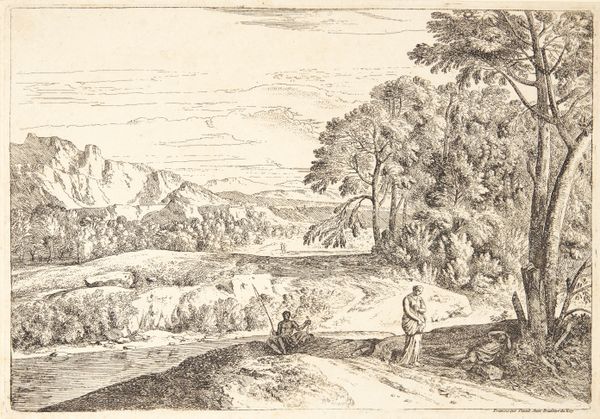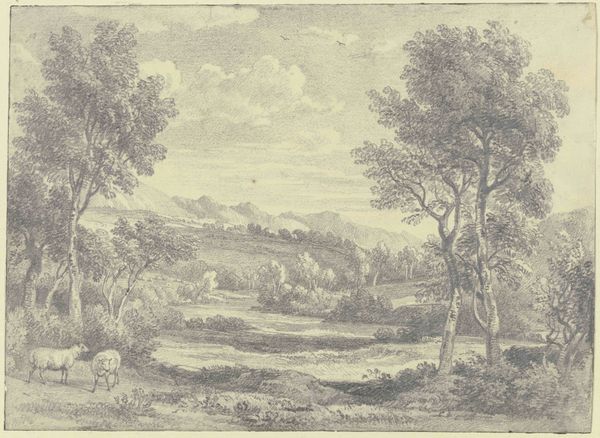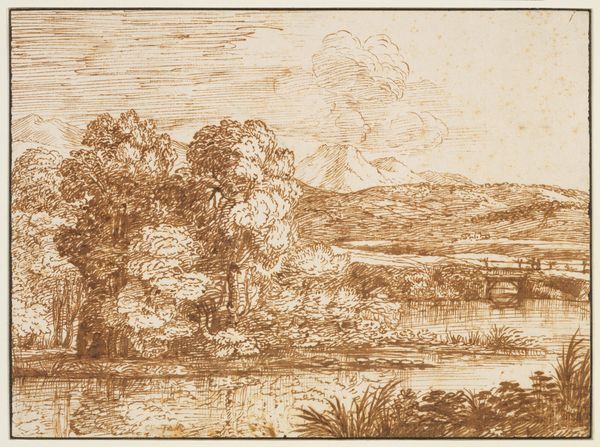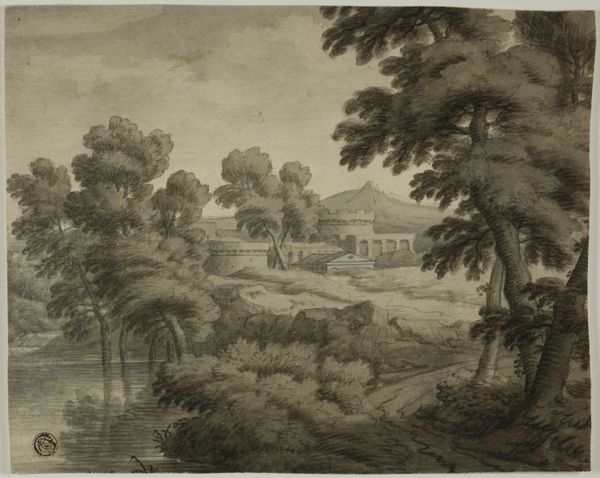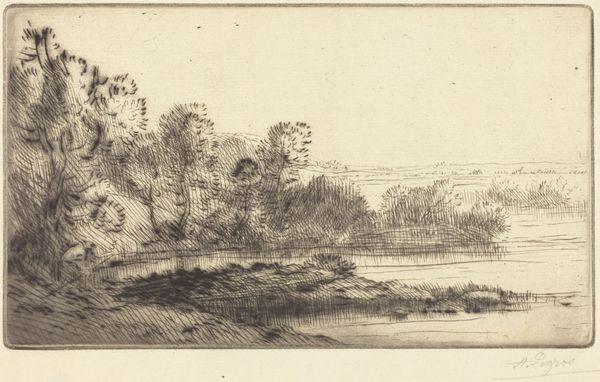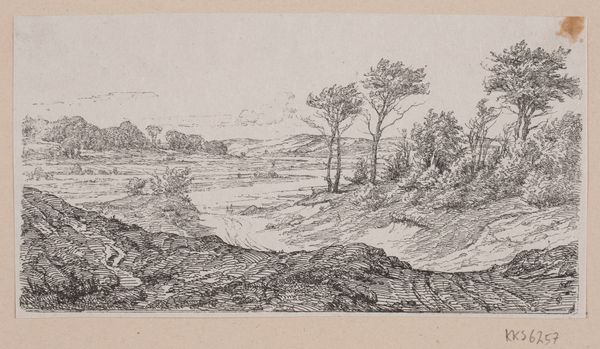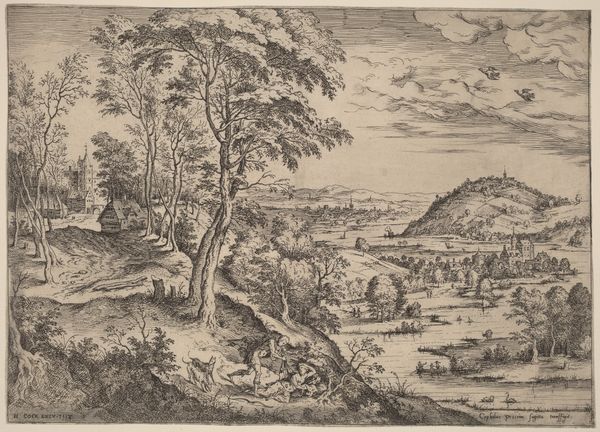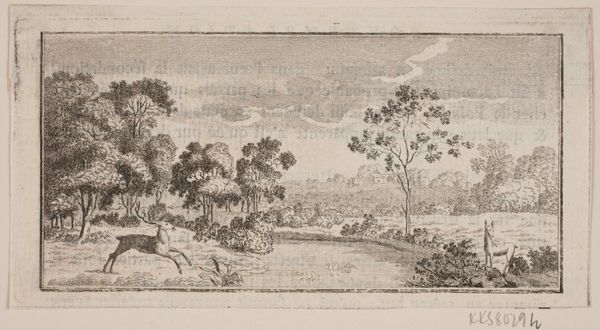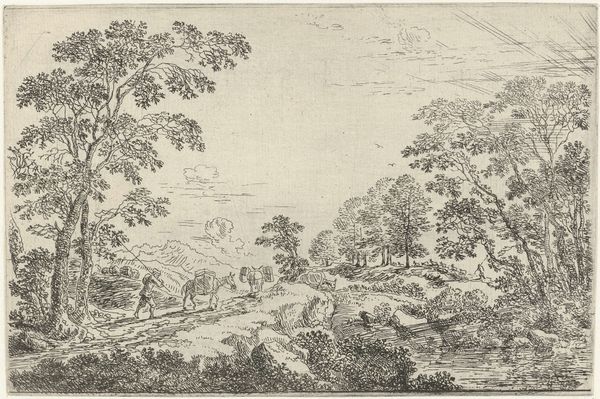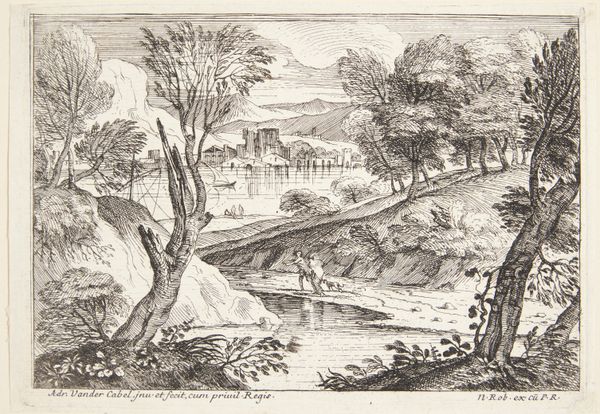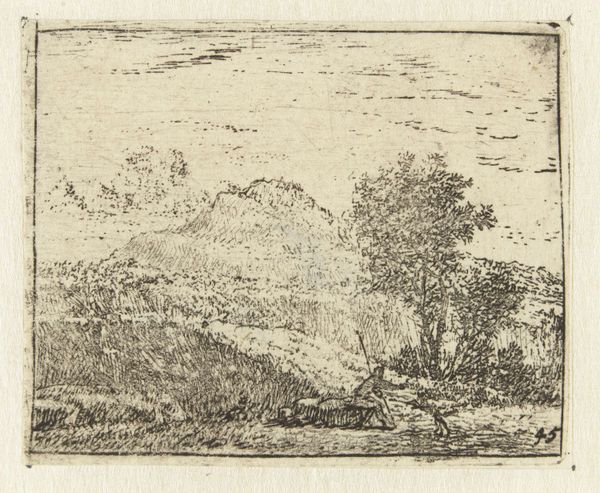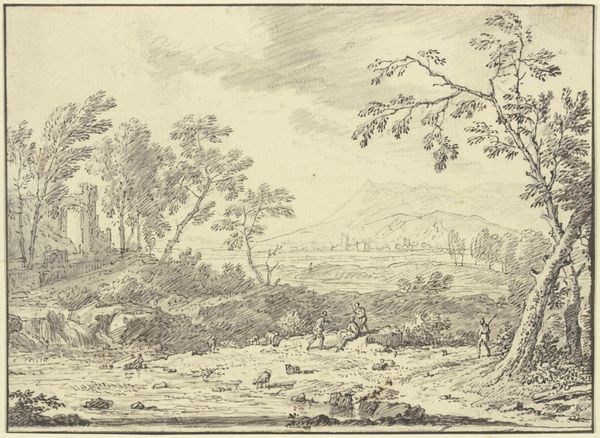
drawing, print, etching, paper, graphite
#
drawing
#
pen drawing
# print
#
etching
#
landscape
#
paper
#
romanticism
#
graphite
Dimensions: 98 × 134 mm
Copyright: Public Domain
Editor: So this is "Bolten Abbey, Wharfdale," a drawing from 1826, by Mary Trevor. It's wonderfully detailed, with this almost wistful atmosphere. What strikes me most is the framing, the way the trees on either side almost stage the abbey ruins. How do you interpret this work? Curator: I see a very self-conscious engagement with Romantic ideals of landscape. The placement of the Abbey isn't just aesthetic; ruins, particularly ecclesiastical ones, had become potent symbols. Ask yourself: What does a ruined Abbey signify in 1826 England? Editor: Decline? Loss of faith? Perhaps a reflection on time and impermanence? Curator: Exactly. And who are the viewers, and what might be their connection to this abbey? The Dissolution of the Monasteries was still a relatively recent historical event and profoundly reshaped English society and land ownership. Romanticism found in ruins a visual language to question progress and social change. The carefully composed image is designed to evoke a specific emotional response. It wasn't just about depicting scenery, but about crafting a visual narrative of the nation's past and its implications for the present. The framing with the trees further reinforces that almost theatrical perspective. Editor: That’s interesting. So the seemingly objective landscape is actually loaded with socio-political commentary? It feels like it's also subtly asking the viewer to think about their place in all this. Curator: Precisely! This isn’t merely a pretty picture; it's a reflection on history, power, and national identity disguised as a landscape. Now, who owned Bolton Abbey and how might their political views be implicated here? Editor: That really changes how I see it. Thanks! I'll never look at a landscape drawing the same way again. Curator: That's the hope. Art provides such fertile ground to understanding our complex history.
Comments
No comments
Be the first to comment and join the conversation on the ultimate creative platform.
